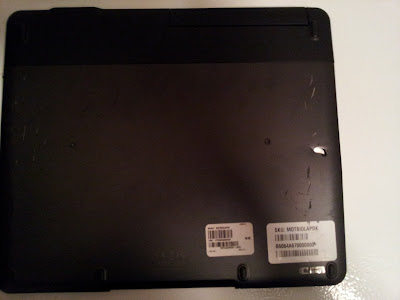The lap-dock turned out to take up a bit more of the view in my front windshield than I was comfortable with, so I've decided to modify my project slightly. I'm going to be getting the Pi set up to operate headless and be completely voice controlled. I spent the majority of the day attempting to get my Pi to recognize my Turtle Beach bluetooth earpiece (to no avail). Setting up bluetooth to work on the Pi is much more difficult than I had anticipated. I may look at getting a simple USB microphone that I can mount somewhere in the vehicle instead.
These obstacles that I seem to be running into have made me realize that my project planning needs a bit more.... well, planning. To that end, I've decided to come up with an official project plan:
Project Summary
The goal of "pi-amp" is to create a headless (no video display) jukebox for the vehicle which is controlled entirely through voice. Pi-amp will log in automatically after boot, after which it will play a sound file to the stereo and begin listening for voice commands. The vehicle operator will then be able to search for either artist, song title, or album name using a simple command structure.
Pi-amp will play a sound to confirm that the command was recognized. If more than one match is found, Pi-amp will inform the operator. The operator may then either say "filter <criteria>" to include only those files which match <criteria>, or say "list choices" to tell Pi-amp to read off the choices. Pi-amp will number the choices as it reads them for easy selection. The operator may say "cancel" at any time to tell Pi-amp to stop any action it is currently performing. After choices are read, the operater may say "select <number>" to indicate to Pi-amp which file should be played.
Timeline
Week 1 (May 6-12):
Successfully boot Raspberry Pi.
Week 2 (May 13-19):
Acquire all hardware necessary for headless in-vehicle operation.
Week 3 (May 20-26):
Successfully record an audio file using an attached microphone.
Week 4 (May 27-June 2):
Install Julius continuous speech decoder OR pocketsphinx.
Week 5 (June 3-9):
Able to play audio files from attached USB hard drive using python script.
Week 6 (June 10-16):
Script to search sound files completed.
Week 7 (June 17-23):
Speech control scripts finalized and pi-amp installed and working in vehicle.
Scope
Hardware Requirements:
- Raspberry Pi
- Powered USB Hub
- USB Microphone
- USB Hard Drive
- 150 Watt 3-Outlet Power Inverter with USB
- 5V 1.2A DC to USB charging adapter with two USB ports
Software Requirements:
- Debian "Wheezy"
- Julius large vocabulary continuous speech recognition decoder OR pocketsphinx
I've already completed the milestones for weeks 1 and 2, but I've yet to complete the milestone for week 3 (successfully record from microphone). As a result, I'm going to have to work a bit of over time in week 4 to finish up week 3's milestone in addition to week 4's. It should be a busy week!


 And I figured I'd probably need these zip ties for the cable routing once I move everything to the vehicle.
And I figured I'd probably need these zip ties for the cable routing once I move everything to the vehicle.






